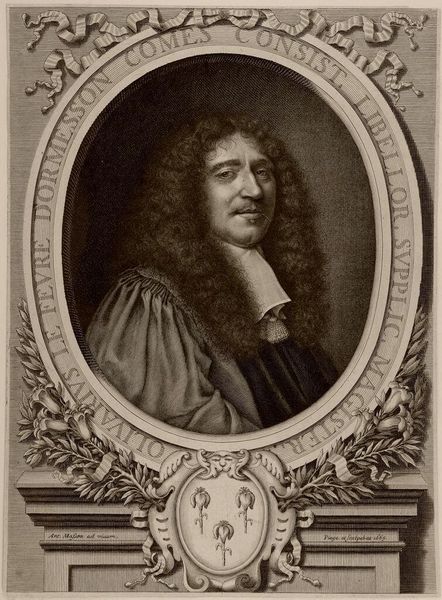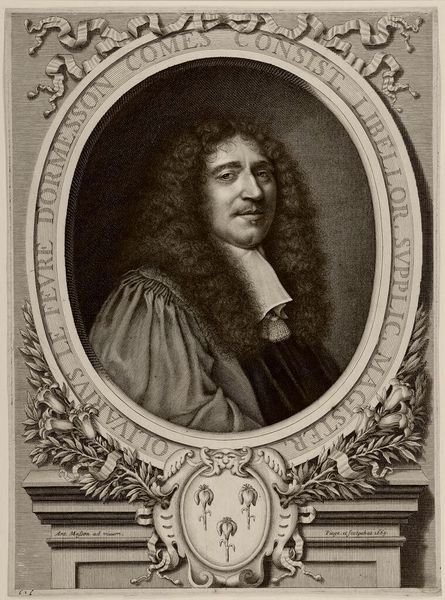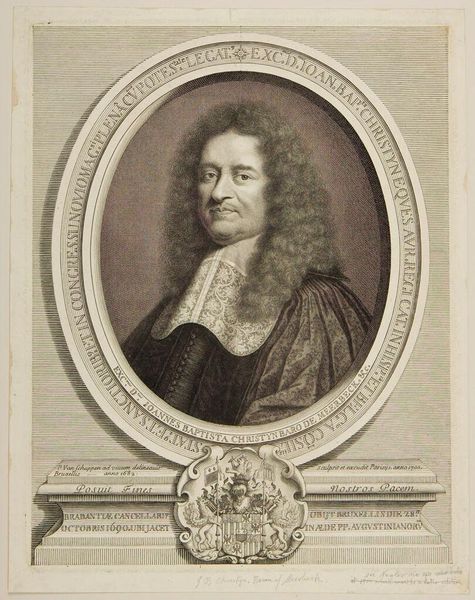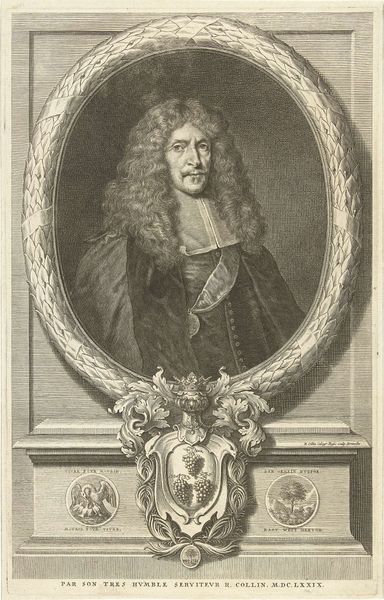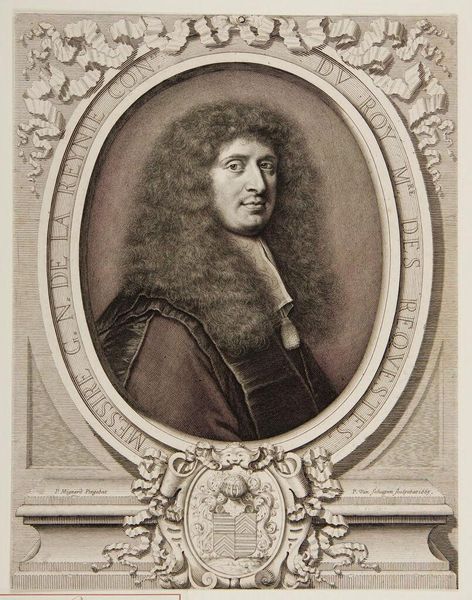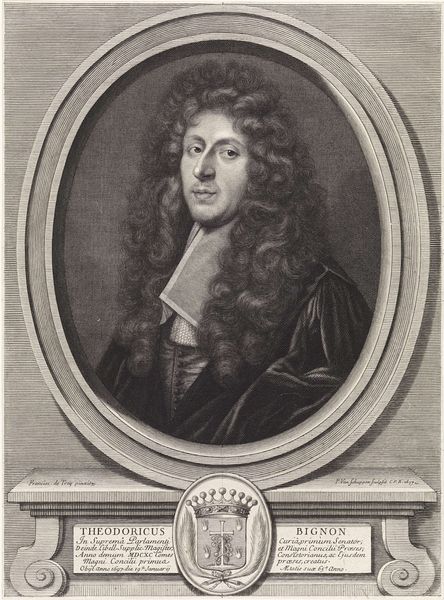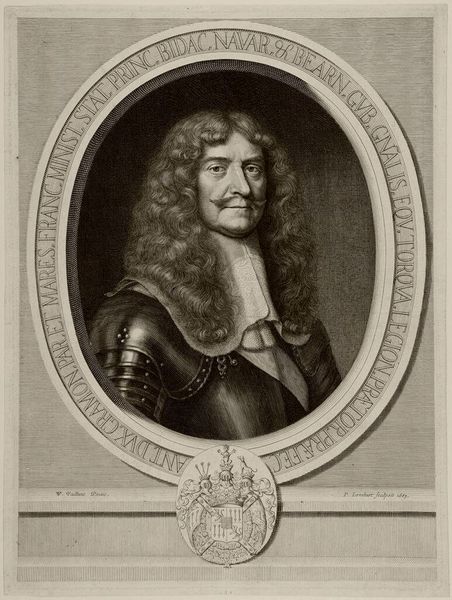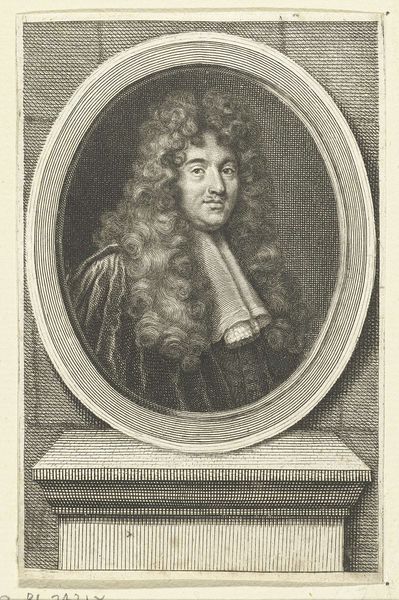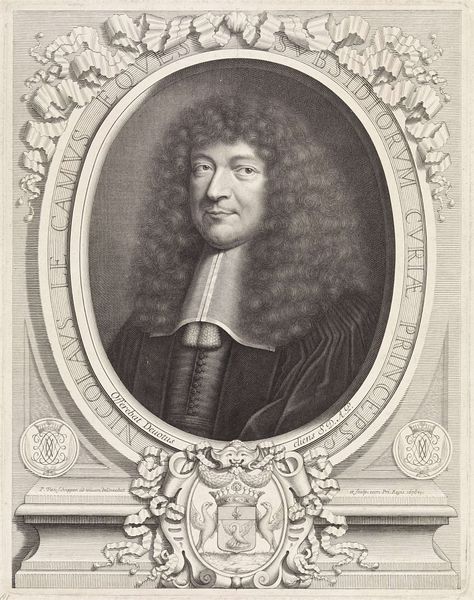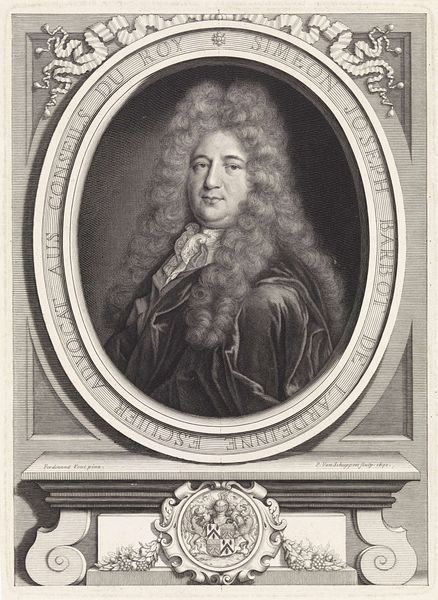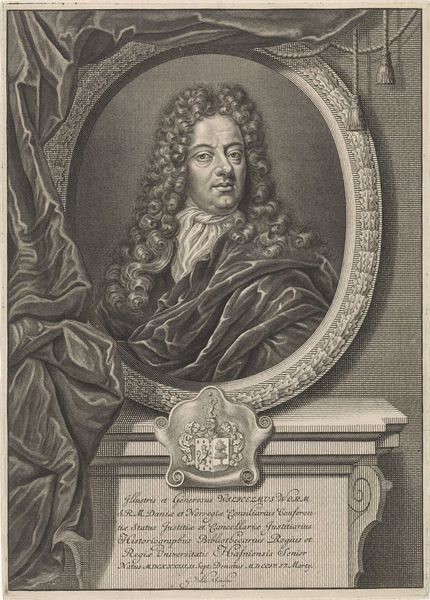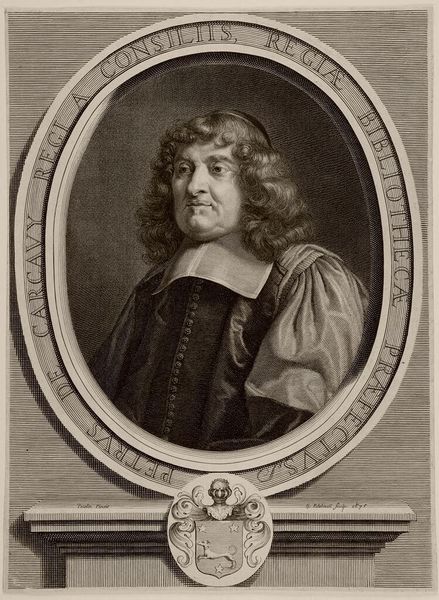
drawing, print, paper, engraving
#
portrait
#
drawing
#
baroque
# print
#
paper
#
france
#
engraving
Dimensions: 367 × 268 mm (plate); 388 × 288 mm (sheet)
Copyright: Public Domain
Editor: So, this engraving is a portrait of Olivier Le Fèvre d'Ormesson by Antoine Masson, created around 1665. It's striking how formal and almost imposing it feels, even within its decorative frame. How should we interpret this through a historical lens? Curator: It’s essential to recognize portraiture's significant role in 17th-century French society. Portraits were not just about likeness; they were powerful tools for constructing and reinforcing social hierarchies and projecting status. Consider Ormesson's attire and the Latin inscription—how do they function within that context? Editor: Well, the wig is an obvious signifier of status, and the inscription probably says something about his accomplishments...but beyond that? Curator: Exactly. Who was Olivier le Fèvre d'Ormesson? Knowing he was a prominent magistrate and member of the Parlement of Paris provides a crucial context. Masson’s engraving was likely commissioned or at least intended to circulate within legal and aristocratic circles. It served as a visual representation of Ormesson's authority and legitimacy within a politically charged environment. Think about the Fronde uprisings – rebellion against the monarchy – which Ormesson was involved in. Does this change how we see the image? Editor: That adds another layer. It’s not just a picture; it’s a statement of power within a specific political climate. So the choice of engraving is intentional too – making the image more reproducible and therefore extending its political reach. Curator: Precisely. The medium allowed for wider dissemination among key audiences, reinforcing his position and perhaps even subtly promoting a particular political stance within those influential circles. This print then operates not just as art, but as a form of political communication. Editor: I had never considered portraiture so intertwined with political power plays. It shifts my perspective quite a bit. Curator: That’s the beauty of understanding art within its historical framework; it becomes a window into the complex social and political dynamics of its time.
Comments
No comments
Be the first to comment and join the conversation on the ultimate creative platform.
